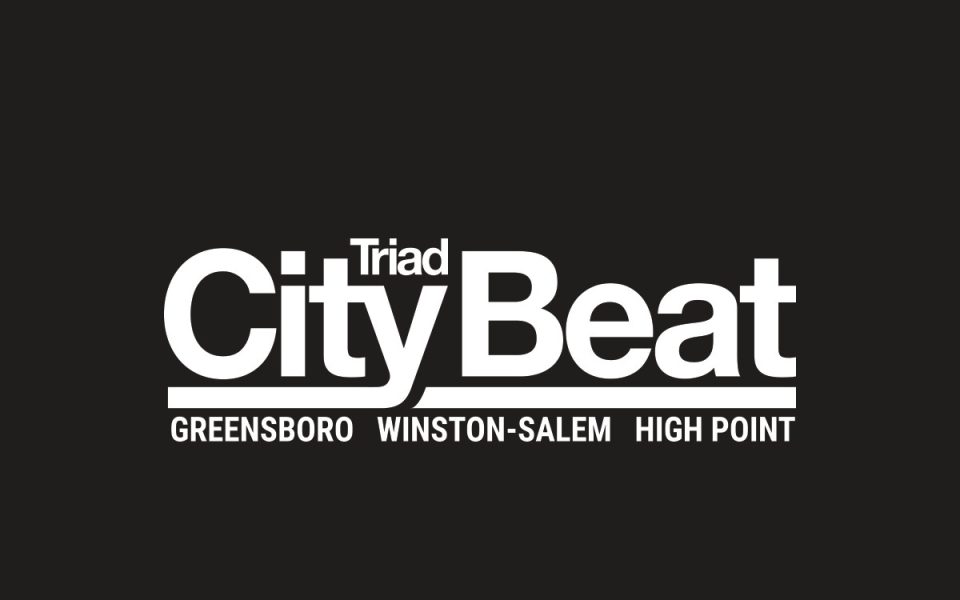If you had $500,000 of tax money to spend however you wanted in the next fiscal year, what would you do with it?
There are a couple parameters, as Community Engagement Coordinator Ranata Reeder explained during a neighborhood assembly of Greensboro Participatory Budgeting on Monday evening at the downtown Central Library. The funds must be spent for public projects, which means they can only be invested in property owned by the city. The monies must be distributed evenly among the five city council districts. And they can only be spent on capital projects that incur a one-time investment, as opposed to new programming that requires recurring spending.
After a brief presentation and a short film, Reeder and Project Assistant Erica Lindenberg broke the meeting into two groups of about 10 people to brainstorm ideas. It didn’t take long for them to get started.
Ryan Saunders, a transit advocate and champion of the creative class, suggested street graphics using paint or decals to make bus stops more visible, perhaps at Elm Street and Cornwallis Drive or other areas with heavy pedestrian traffic.
A woman sitting in the back suggested embedding reflectors along the outlines of bike lanes so motorists are more likely to avoid hitting cyclists on rainy days with limited visibility.
“I don’t know if that’s eligible,” she said.
“Yeah, totally eligible,” enthused Dave Reed, who serves on the steering committee of Greensboro Participatory Budgeting.
One person suggested wifi hotspots in Latham Park, and another proposed the same for the new park under construction next to Union Square.
“Honestly, wifi along the greenway would be pretty awesome,” Reed said.
Reynaldo Diaz proposed stone, weatherproof chess tables in parks.
“I like that,” Reeder said.
“You know, it’s a grid,” Diaz continued. “You can play chess or checkers. Or you could bring your board game. A place that would bring people together.”
When Lindenberg’s group reported its priorities, pedestrian safety enhancements at intersections around NC A&T University, including a crosswalk at Lindsay and Sullivan streets, and an unstaffed waterpark for children at Swing Road and West Market Street came up as highlights.
The idea of letting residents directly decide how their tax dollars will be spent — short-circuiting the priorities set by staff with input from elected representatives — might seem novel. But it’s actually happening in Greensboro, thanks to a split vote to approve the process by city council in October 2014 (Mayor Nancy Vaughan voted against it along with council members Mike Barber, Zack Matheny and Tony Wilkins). As consultants employed by the city on a contract basis, Reeder and Lindenberg will be responsible for gathering ideas from residents through neighborhood assemblies and more informal “pop-up” meetings. Later, they’ll train budget delegates to engage in proposal development. The next step will be project expos, which Reed described as being kind of like a science fair, where residents can learn about the proposed projects. Finally, in May, residents will vote on how they want to see $100,000 spent in each city council district.
Participatory budgeting has been used in New York City and Chicago, but only within particular districts, where council members hold control over discretionary spending in their jurisdictions. Greensboro is the second city in the nation and the first in the Southeast to implement participatory budgeting on a citywide basis. Vallejo, Calif. adopted participatory budgeting after the city was forced to impose a sales tax to sustain itself coming out of bankruptcy. Reed pointed out that Greensboro is the first city in the nation to implement citywide participatory budgeting using pre-existing funds, as opposed to revenues created through new taxes on residents.
The question remains as to who is able to take time out of work and family obligations to participate in this process, but Reeder argued after the assembly that the time commitment to show up for a meeting and offer ideas and then vote on final proposals in May is pretty minimal. There are opportunities for people who want to volunteer more time to shape the budget proposals, she added.
“People in lower-income areas participate more [in participatory budgeting] than they do in traditional elections,” Reeder said. “We’ve seen that in Vallejo and New York. The implications for equity, diversity and inclusion are tremendous.”
From observing a participatory budgeting process in the Bronx, Reed said the projects that get final approval tend to be a mix of the practical and imaginative — maybe giving a slight edge to the practical.
“The free wifi on the greenway is totally cool,” he said, talking up his own idea, while acknowledging it may not be the one that wins out.
“That dangerous crosswalk at Lindsay and Sullivan is probably what’s going to get the votes,” he predicted.
Join the First Amendment Society, a membership that goes directly to funding TCB‘s newsroom.
We believe that reporting can save the world.
The TCB First Amendment Society recognizes the vital role of a free, unfettered press with a bundling of local experiences designed to build community, and unique engagements with our newsroom that will help you understand, and shape, local journalism’s critical role in uplifting the people in our cities.
All revenue goes directly into the newsroom as reporters’ salaries and freelance commissions.






Leave a Reply